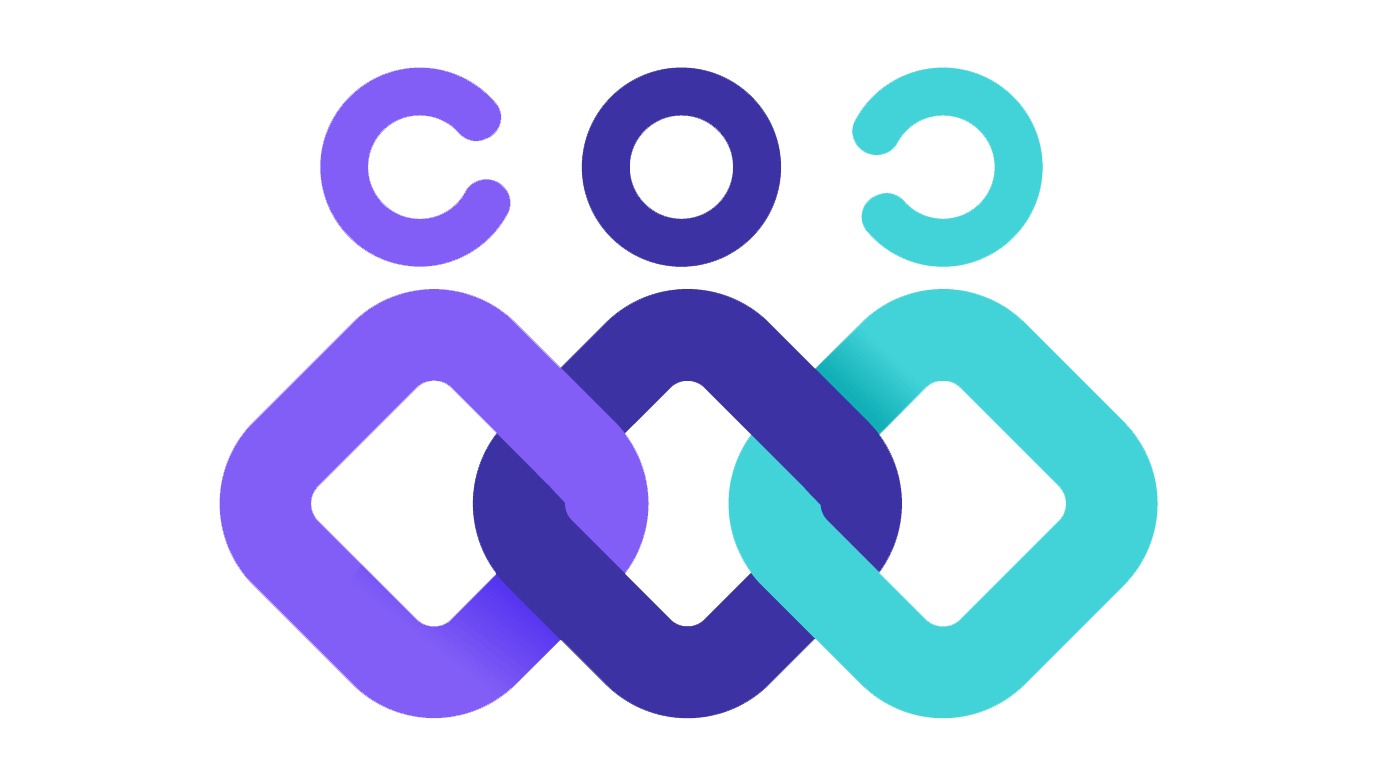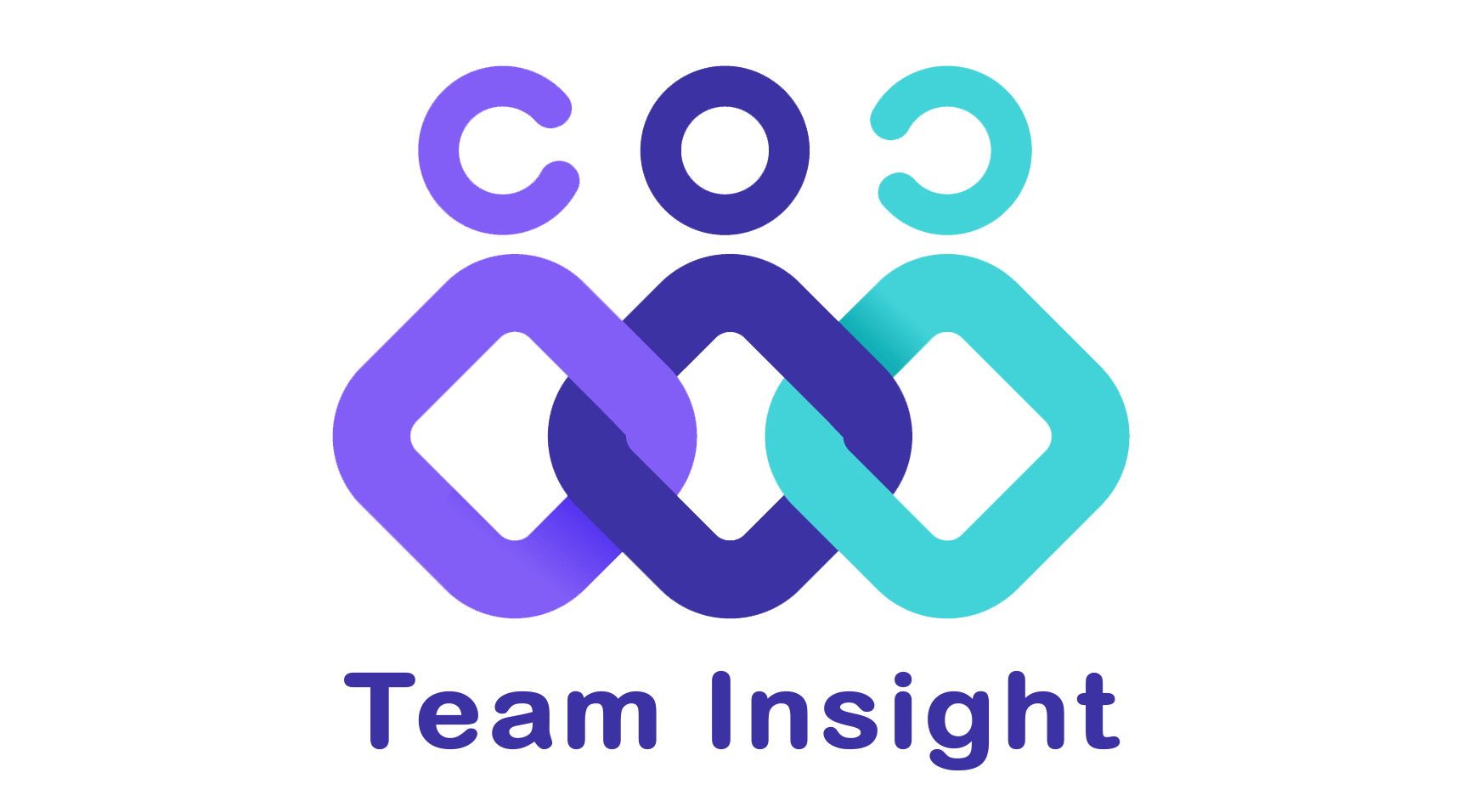- Home
- Product
-
Product Overview
Team Insight combines performance management, recognition, and local rewards in a single loop — so teams grow fairly, stay engaged, and feel valued.
PRODUCT
Employee Performance Management Software
Tools to improve performance and growth tracking.
Employee Recognition & Rewards Software
Build positivity by valuing daily wins.
Employee Engagement Software for SMEs
Drive productivity with clear access and accurate tracking.
OKR & KPI Software for Small Teams
Tools to improve performance and growth tracking.
-
- Resources
- Capture leads and make buying easySed ut perspiciatis unde omnis iste natus error sit voluptatem accusantium doloremque laudantium, totam aperiam, eaquecy epsa abillo inventore veritatis architecto beatae
- Complete documentation
- Working materials in Figma
- 100GB cloud storage
- 500 team members
- Complete documentation
- Working materials in Figma
- 100GB cloud storage
- 500 team members
 Capture leads and make buying easySed ut perspiciatis unde omnis iste natus error sit voluptatem accusantium doloremque laudantium, totam aperiam, eaquecy epsa abillo inventore veritatis architecto beatae
Capture leads and make buying easySed ut perspiciatis unde omnis iste natus error sit voluptatem accusantium doloremque laudantium, totam aperiam, eaquecy epsa abillo inventore veritatis architecto beatae- Complete documentation
- Working materials in Figma
- 100GB cloud storage
- 500 team members
- Complete documentation
- Working materials in Figma
- 100GB cloud storage
- 500 team members
Capture leads and make buying easySed ut perspiciatis unde omnis iste natus error sit voluptatem accusantium doloremque laudantium, totam aperiam, eaquecy epsa abillo inventore veritatis architecto beatae- Complete documentation
- Working materials in Figma
- 100GB cloud storage
- 500 team members
- Complete documentation
- Working materials in Figma
- 100GB cloud storage
- 500 team members
 Capture leads and make buying easySed ut perspiciatis unde omnis iste natus error sit voluptatem accusantium doloremque laudantium, totam aperiam, eaquecy epsa abillo inventore veritatis architecto beatae
Capture leads and make buying easySed ut perspiciatis unde omnis iste natus error sit voluptatem accusantium doloremque laudantium, totam aperiam, eaquecy epsa abillo inventore veritatis architecto beatae- Complete documentation
- Working materials in Figma
- 100GB cloud storage
- 500 team members
Latest Product Updates
Strong Signals
Accelerate Your Monitoring Efforts with ‘Team Insight,’ an AI-Powered Solution.
Smart Ideation
Enhance Your Creative Process with GenAI-Powered Ideation.
Knowledge Hub: Articles, Webinars...Explore our blog, webinars, and case studies to stay informed. Visit the Help Center for all the resources you needContent summary: Discover insights and expert advice through our blog to stay updated with the latest trends and solutions.
Discover insights and expert advice through our blog to stay updated with the latest trends and solutions.
Join our webinars for expert-led discussions and real-time learning from industry leaders.

Explore our case studies to see how our solutions drive success in real-world scenarios.

Visit our Help Center for quick answers, resources, and support to assist you every step of the way.
Articles, Webinars...
Explore our blog, webinars, and case studies to stay informed. Visit the Help Center for all the resources you need
RESOURCES
Blog Articles
Discover insights and expert advice through our blog
Webinars
Join our webinars discussions and learning from industry leaders.
CaseStudies
Explore our case studies
Help Center
Visit our Help Center for quick answers, resources.
-
- Success Stories
- Login
- Pricing
- Company
-
A Story of Growth, Trust, and Vision
Our journey is built on a commitment to empowering people and increasing employee productivity. By fostering trust and innovation, we aim to create a work environment where growth and success go hand in hand.
About Us: A team driven by innovation, focused on growth and productivity.
A team driven by innovation, focused on growth and productivity.
Contact us with any questions or feedback. Let’s boost productivity together.
A Story of Growth...
Our journey is built on a commitment to empowering people and increasing employee productivity. By fostering trust and innovation, we aim to create a work environment where growth and success go hand in hand.
ABOUT OUR COMPANY
About Us
A team driven by innovation, focused on growth and productivity.
Contact Us
Contact us with any questions or feedback. Let’s boost productivity together.
Our Team
Meet the people behind TeamInsight
-

The Reward No One Uses: Why Engagement Starts With Relevance
Have you ever launched a reward program only to realize your employees never actually use the perks you’ve paid for? You’re not alone. Across many small and growing businesses, HR teams spend precious budget on gift cards, vouchers, and discounts that sit forgotten in inboxes. It’s frustrating — and it sends the wrong message. When a reward goes unused, it doesn’t just waste money; it misses an opportunity to connect with your people in a meaningful way.
That’s exactly where wellbeing rewards employees redeem come into play. These aren’t generic incentives or one-size-fits-all perks. They’re rewards that feel personal, purposeful, and genuinely valuable — things your team wants to claim because they support their real-life wellbeing. Whether it’s a subscription to a meditation app, a flexible wellness stipend, or an extra day off to recharge, these are the rewards that drive actual engagement and boost morale.
Think about it: your employees aren’t motivated by another coffee voucher or discount code that expires in a month. What they truly value is a company that understands their needs, supports their health, and respects their time. By offering wellbeing rewards employees redeem, you show that you care not just about their performance, but about their overall happiness and balance.
In today’s competitive talent market, that distinction matters more than ever. Employees remember how a company makes them feel, and wellbeing-driven rewards send a clear, positive message — “You matter here.”
In this article, you’ll discover why traditional reward models fail, what kinds of perks actually get redeemed, and how you can design a wellbeing rewards system that your team will love — and use. Because when your employees redeem their rewards, your investment finally delivers the return it was meant to.
Why Generic Coupons Don’t Work
You’ve probably offered gift cards, lunch vouchers, or discount codes and hoped they’d make your team feel appreciated. Yet a few months later, you check the numbers and discover how few people ever used them. It’s not that your team doesn’t care about rewards — it’s that those generic coupons simply don’t connect. They feel transactional, impersonal, and, often, inconvenient.
The truth is, most coupon-style perks fail because they ignore what truly drives engagement: relevance and simplicity. A generic coffee voucher may please a few employees, but it won’t inspire your broader team to participate or feel valued. That’s why wellbeing rewards employees redeem are transforming how small businesses approach recognition. These rewards are designed around real needs — stress relief, health, rest, and balance — not just spending power.
When you focus on wellbeing rewards employees redeem, you shift from a “buy something” mindset to a “feel better” experience. A yoga class, a mental-health app, or a healthy-meal subscription provides a personal touch that a generic coupon never can. Employees use these benefits because they fit into their lives, not because they’re forced to redeem them before an expiry date.
Another reason coupons underperform is friction. Too many steps, too many conditions, too many limits. Every unnecessary click reduces redemption rates and the sense of appreciation. With wellbeing rewards employees redeem, the process is effortless — your people receive something instantly usable and emotionally rewarding. No forms, no expiry anxiety, no confusion.
For you as a leader, that’s the difference between wasted budget and measurable impact. When employees consistently redeem their wellbeing rewards, engagement grows, satisfaction improves, and retention rises. Instead of handing out another forgettable coupon, you’re investing in experiences that actually enrich your culture.
So before you print another batch of vouchers, ask yourself: will this perk sit in someone’s drawer, or will it genuinely make them feel healthier, happier, and more connected to your company? The answer lies in wellbeing rewards employees redeem — rewards that people don’t just receive, but truly value and use.
The Difference Between a Gift and an Experience
Here’s a truth you already know deep down: a reward isn’t valuable because of its price tag — it’s valuable because of how it makes someone feel. You can spend $50 on a gift card, but if your employee forgets to use it, the gesture loses meaning. On the other hand, when a team member receives something that creates a positive experience — time to recharge, access to wellness tools, or an opportunity to grow — it sticks. That’s the magic behind wellbeing rewards employees redeem.
A gift is something you give. An experience is something your employee lives. A gift can expire; an experience leaves a memory. When you offer wellbeing rewards employees redeem, you’re giving your people the chance to engage with something that directly supports their health, happiness, or personal goals. It’s not a transaction — it’s a connection.
Think about it this way: a generic shopping voucher is gone the moment it’s spent. But an experience like a virtual mindfulness course, a massage session, or a “mental health day” off changes how your team feels about work. These are wellbeing rewards employees redeem because they make sense in their daily lives — they fit their routines, address real stress, and signal that you care about more than just productivity.
The most successful small companies understand this difference. They know their people want moments, not merchandise. Experiences inspire emotion, foster loyalty, and create authentic engagement. They also make your recognition efforts more memorable — something employees talk about, share, and appreciate long after the moment has passed.
So next time you’re designing your rewards program, ask yourself: Will this reward be remembered, or will it be forgotten?
If it creates an experience — something that supports wellbeing, rest, or self-improvement — it’s likely one of those wellbeing rewards employees redeem with enthusiasm, not obligation.
The Meaning of Wellbeing Rewards (and Why They Work)
You might be asking yourself: what exactly makes a reward a “wellbeing reward”? At its core, wellbeing rewards employees redeem are incentives designed to enhance your team’s mental, physical, and emotional health — not just their wallets. They’re the kind of perks that make your employees feel seen, valued, and supported in ways that generic incentives simply can’t.
When you offer rewards that focus on wellbeing, you’re saying: “We care about you, not just what you do for the company.” And that distinction matters. Employees notice when a perk aligns with their needs. It could be a subscription to a meditation app, a class to improve fitness, access to healthy meal plans, or even an extra day off dedicated to personal time. When your team actually wants to use the benefit, you’ve entered the sweet spot of wellbeing rewards employees redeem.
These rewards work for several reasons. First, they reduce friction. The easier it is for your employees to claim and use a perk, the higher the redemption rate. Second, they’re meaningful. Unlike a generic gift card that might get lost or ignored, wellbeing-focused incentives are tied to real outcomes — reduced stress, improved energy, and a sense of being valued. Third, they’re personalized. People respond when they have choice. If your employees can select the reward that fits their life, they’re far more likely to redeem it.
And here’s the best part: the impact of wellbeing rewards employees redeem goes beyond immediate satisfaction. When your team experiences real, tangible benefits, you create loyalty, increase engagement, and foster a culture where people feel supported. That means higher retention and a stronger employer brand — outcomes every SME founder and HR leader wants.
So, if you’re serious about building a rewards program that actually works, it’s not about how much money you spend; it’s about the relevance, usability, and meaningful impact of your incentives. Focus on the kinds of wellbeing rewards employees redeem, and you’ll see the difference in both morale and measurable results.
3 Big Mistakes Companies Make When Designing Rewards
If you’re trying to create a rewards program that truly resonates, it’s important to avoid the common pitfalls that make incentives ineffective. Many small businesses fall into the same traps, spending money on perks that don’t motivate employees or deliver measurable results. Here are three mistakes to watch out for — and how focusing on wellbeing rewards employees redeem can help you avoid them.
1. Prioritizing Cost Over Value
You might think that a big-ticket gift card or expensive gadget will impress your team. But high cost doesn’t guarantee high engagement. Employees care about relevance and usability more than price. A modestly priced wellness subscription or flexible perk that they actually use will have a far greater impact than a costly item left untouched. Remember, the goal is wellbeing rewards employees redeem, not rewards that just sit in a drawer.
2. One-Size-Fits-All Rewards
Every employee is different. A generic approach assumes everyone values the same perks, but that couldn’t be further from reality. Some might love gym memberships, while others prefer meditation apps, mental health resources, or extra personal time. By offering choices and personalization, you ensure your employees find rewards meaningful — and actually redeem them. The key is designing wellbeing rewards employees redeem, not perks you think they’ll like.
3. Complicated Redemption Processes
Even the most thoughtful reward can fail if it’s hard to claim. Multiple approval steps, short expiration dates, or confusing instructions create friction and reduce engagement. Employees are far more likely to take advantage of incentives that are simple and immediate. The easier it is to use a reward, the higher your chances that it becomes one of the wellbeing rewards employees redeem.
Avoiding these mistakes sets the foundation for a program that delivers real value. When you focus on meaningful, easy-to-use, and personalized incentives, you create a system where employees not only feel appreciated but also engage with the perks — exactly what wellbeing rewards employees redeem are meant to achieve.
Rewards That Actually Get Redeemed: What Works
If you’ve ever struggled to see your perks actually used, you know how frustrating it can be. The key is to focus on rewards that your team will genuinely want to redeem. When you design wellbeing rewards employees redeem, you’re creating incentives that align with real needs — mental health, physical wellness, and overall life balance. These are the rewards that don’t sit forgotten in inboxes or desk drawers.
So, what kinds of rewards truly get redeemed? First, consider personalization and choice. Employees respond best when they can pick a perk that fits their lifestyle. Some might prefer a meditation app subscription, while others will value a fitness class, a healthy meal service, or even a flexible day off. Giving your team options increases the likelihood of redemption and ensures the rewards feel meaningful.
Second, think simplicity and accessibility. The fewer steps required to claim a reward, the higher the usage. Whether it’s a one-click digital voucher or an automatically applied wellness credit, removing friction ensures your incentives turn into action. Easy-to-use perks are essential for wellbeing rewards employees redeem because even the most thoughtful gift loses its value if it’s hard to access.
Third, focus on experience-based rewards rather than just material gifts. Experiences — such as wellness workshops, virtual fitness classes, or mindfulness coaching — provide lasting value that your team remembers. Unlike generic gift cards, experiences create positive emotional impact, making them more likely to be redeemed and appreciated.
Finally, tie the reward to your company culture and values. When employees see that a perk aligns with the organization’s commitment to health, wellbeing, and work-life balance, they feel recognized in a deeper, more meaningful way. That’s exactly the kind of wellbeing rewards employees redeem that boosts engagement and loyalty.
By combining personalization, simplicity, experience, and cultural alignment, you create a program where employees not only receive rewards — they actively use and enjoy them. And that’s the point: when you design wellbeing rewards employees redeem, your investment pays off in real engagement, happiness, and retention.
The Role of Choice and Flexibility in Wellbeing Rewards
You might be wondering why some rewards programs succeed while others fail, even when budgets are similar. The answer often comes down to choice and flexibility. When employees have the ability to pick the rewards that matter most to them, you naturally increase engagement and redemption rates. That’s why wellbeing rewards employees redeem almost always include options that cater to individual preferences.
Think about it: not everyone values the same things. One team member might prefer a fitness subscription, while another values mindfulness apps, healthy meal deliveries, or an extra personal day. If you provide a single, one-size-fits-all perk, it’s likely to go unused. But when you give people the freedom to choose, you empower them — and they respond by actively redeeming their rewards.
Flexibility doesn’t just mean offering options; it also means making rewards timely and adaptable. Can employees use their perk when they actually need it? Can they swap it for something else if circumstances change? The more control they have, the more likely they are to see the reward as meaningful. That’s the core of designing wellbeing rewards employees redeem.
Choice also communicates trust. By letting your employees select perks that suit them, you show that you understand their individual needs and respect their judgment. This approach strengthens engagement, boosts satisfaction, and fosters loyalty. When people feel valued and heard, they are far more likely to interact with the rewards you provide.
Finally, pairing choice with simplicity is crucial. Too many options or complicated processes can backfire, leading to decision fatigue. The sweet spot is curated flexibility — a selection of meaningful perks, easy to access and redeem. That’s exactly what makes wellbeing rewards employees redeem effective in practice.
When you design a rewards program with choice, flexibility, and ease of use, you create an environment where employees not only feel appreciated but also take action — actively claiming the perks that improve their wellbeing and their connection to your company.
Case Studies: Wellbeing Rewards That Truly Work
Sometimes the best way to understand what works is to see it in action. Let’s look at a couple of examples that illustrate how wellbeing rewards employees redeem can make a real impact in small and medium-sized businesses.
Case Study 1: A Tech Startup
A growing tech startup wanted to boost morale and reduce burnout in a team of 50 employees. Instead of generic gift cards, they introduced a wellness credit program. Each employee received a monthly stipend to spend on anything from meditation apps to fitness classes. The results were clear: within three months, 87% of employees had redeemed their credits, and satisfaction scores increased significantly. By giving the team control over their perks, the company created wellbeing rewards employees redeem consistently — and the benefits went beyond engagement, improving productivity and overall happiness.
Case Study 2: A Small Marketing Agency
A marketing agency with 30 employees faced high turnover and low engagement. They decided to pilot experience-based rewards instead of material gifts. Employees could choose from options like online yoga classes, mental health counseling, or a personal development course. The simplicity of access and relevance to personal wellbeing led to 92% redemption within the first quarter. Employees reported feeling recognized and genuinely cared for, proving that wellbeing rewards employees redeem can drive loyalty and long-term retention.
Key Takeaways from the Case Studies
Relevance is critical: Employees are far more likely to use perks that matter to them personally.
Simplicity drives action: Easy-to-access rewards increase redemption rates and engagement.
Experiences leave lasting impact: Unlike generic gifts, wellness-focused rewards improve overall satisfaction and connection to the company.
Both examples demonstrate that when you design wellbeing rewards employees redeem, you’re not just giving a perk — you’re creating experiences that employees value, use, and remember. The results are tangible: higher engagement, lower turnover, and a stronger workplace culture.
If you want your rewards program to succeed, look to these examples. Ask yourself: are my incentives meaningful, flexible, and easy to redeem? If so, you’re on the path to offering wellbeing rewards employees redeem that truly make a difference.
Measuring Redemption and Engagement: How to Track Success
You can design the most thoughtful, flexible, and meaningful rewards program, but how do you know it’s actually working? The answer is tracking and measuring — because without data, you’re guessing. To ensure your program delivers results, you need to monitor both redemption rates and employee engagement, particularly when offering wellbeing rewards employees redeem.
Start with redemption rate. This is the percentage of rewards that employees actually claim and use. If you notice a low redemption rate, it’s a signal that your rewards may not be relevant, accessible, or appealing enough. Conversely, high redemption rates indicate that your incentives are resonating — they’re the wellbeing rewards employees redeem that your team genuinely values.
Next, look at engagement metrics. Track feedback from employees, satisfaction surveys, and usage patterns. Are employees actively talking about the perks? Are they using wellness credits to try new activities or improve their work-life balance? These qualitative insights tell you more than numbers alone, revealing which rewards create real impact and which need tweaking.
Don’t forget timing and convenience. Some perks are seasonal or tied to deadlines, which can affect redemption rates. By monitoring trends over time, you can adjust offerings, deadlines, and communication strategies to maximize usage. The goal is to create a seamless experience that encourages employees to claim their rewards easily and consistently.
Finally, combine the data with employee input. Ask your team what they like, what they wish for, and what’s preventing them from using perks. This feedback helps you refine your program and ensures your wellbeing rewards employees redeem continue to meet real needs.
Tracking and analyzing redemption and engagement not only helps you justify the investment but also strengthens your relationship with employees. When you know which perks work and which don’t, you can create a culture of recognition that is both meaningful and actionable — a culture where wellbeing rewards employees redeem truly make a difference.
Common Pitfalls in Wellness Rewards Programs
You want your rewards program to succeed, but even the best intentions can stumble if you fall into common traps. Recognizing these pitfalls early helps you design wellbeing rewards employees redeem that truly engage your team.
1. Offering Irrelevant Rewards
If your perks don’t match what your employees actually want or need, they’ll go unused. A generic gift card or unrelated merchandise might seem appealing, but if it doesn’t support wellness or personal growth, it won’t be redeemed. Focusing on wellbeing rewards employees redeem ensures every incentive has real value.
2. Complicated Redemption Processes
Even a great perk loses its appeal if claiming it is difficult. Multiple approval steps, short expiration dates, or confusing platforms create friction and discourage participation. Your goal is to make it effortless for employees to redeem rewards, turning them into wellbeing rewards employees redeem instead of forgotten items.
3. Ignoring Personalization and Choice
One-size-fits-all rewards rarely satisfy everyone. Employees have different preferences and lifestyles, and failing to offer flexibility can drastically reduce engagement. Giving your team options — from meditation apps to fitness classes or flexible wellness days — ensures that each perk is likely to be among the wellbeing rewards employees redeem.
4. Focusing Only on Cost
High budgets don’t guarantee high redemption. It’s easy to assume expensive perks automatically generate excitement, but relevance and usability matter more. Employees appreciate meaningful, simple, and personal rewards more than costly but generic ones.
5. Lack of Feedback Loops
If you don’t ask your team how they feel about the program, you won’t know what works. Regular surveys, focus groups, or casual check-ins help you refine offerings and maintain wellbeing rewards employees redeem that consistently meet employee needs.
By avoiding these pitfalls, you ensure your program is not only attractive but actionable. Your employees will engage with the perks you provide, leading to higher satisfaction, loyalty, and retention. Ultimately, success lies in delivering wellbeing rewards employees redeem that feel relevant, meaningful, and easy to access.
The Future of Employee Wellness Rewards
You’ve seen how effective wellbeing rewards employees redeem can be today, but what about tomorrow? As workplace expectations evolve, the future of rewards is moving toward personalization, data-driven insights, and seamless experiences. Understanding these trends ensures your program stays relevant and continues to engage your team.
First, technology is transforming how rewards are delivered. Mobile apps, integrated wellness platforms, and digital credits make claiming perks effortless. Employees can now browse, select, and redeem rewards in a few clicks — ensuring your offerings truly become wellbeing rewards employees redeem instead of unused vouchers.
Second, personalization is taking center stage. Tomorrow’s rewards programs won’t just provide options; they’ll tailor perks based on individual preferences, lifestyle, and even health goals. By understanding your team’s unique needs, you can offer experiences that are more likely to be claimed and appreciated, increasing the effectiveness of wellbeing rewards employees redeem.
Third, data and feedback loops will drive smarter decisions. By tracking redemption patterns, engagement levels, and employee satisfaction, you can refine your program in real time. This ensures your investment produces measurable outcomes — happier, healthier employees who feel recognized and supported. Programs that ignore feedback risk becoming irrelevant and underutilized, while those that evolve become wellbeing rewards employees redeem consistently.
Finally, the future emphasizes holistic wellbeing. Employees now value programs that support not only physical health, but mental wellness, work-life balance, and personal growth. Companies that integrate these elements into their rewards strategy will see higher engagement, stronger retention, and a culture that employees genuinely value.
In short, the future of rewards isn’t about flashy gifts or one-size-fits-all incentives. It’s about designing wellbeing rewards employees redeem that fit your team’s lifestyle, are easy to access, and deliver real, lasting value. By embracing this approach, you ensure your employees feel supported and appreciated, today and in the years to come.
How to Build a Wellbeing Rewards Program That Works
You want your rewards program to deliver real results, not just sit as a line item in the budget. The secret? Designing wellbeing rewards employees redeem from the ground up. Here’s how you can create a system that actually engages your team and improves morale.
Step 1: Understand Your Team’s Needs
Start by asking your employees what matters most to them. Conduct surveys, hold focus groups, or have one-on-one conversations. The goal is to identify perks that are relevant, meaningful, and actionable. The insights you gain will help ensure your wellbeing rewards employees redeem are aligned with real preferences, increasing redemption rates and satisfaction.
Step 2: Offer Choice and Flexibility
Avoid a one-size-fits-all approach. Provide a variety of options — mental health apps, fitness subscriptions, wellness classes, or personal development courses. Giving employees control over which rewards they use increases the likelihood that they’ll engage. Choice is a cornerstone of wellbeing rewards employees redeem because it makes the experience personal and motivating.
Step 3: Simplify the Redemption Process
Even the most thoughtful rewards fail if claiming them is complicated. Use digital platforms, one-click systems, or automated credits to make it seamless. The easier it is to access and redeem, the higher the engagement. Simplified processes are key to ensuring your perks become wellbeing rewards employees redeem, not just perks employees forget.
Step 4: Align Rewards with Culture and Values
Your rewards should reflect your company’s values and culture. For example, if your company emphasizes work-life balance, consider perks like flexible hours or wellness days. When employees see a connection between the reward and your organization’s mission, they’re more likely to value and use it.
Step 5: Track, Measure, and Iterate
Finally, monitor redemption rates, employee feedback, and engagement metrics. Learn what works and what doesn’t, then adjust your offerings. Programs that evolve over time remain relevant, ensuring your wellbeing rewards employees redeem continue to create impact and satisfaction.
By following these steps, you can design a wellbeing rewards program that isn’t just a perk — it’s a strategic tool that supports your team, improves engagement, and delivers measurable results. When employees actively redeem and enjoy their rewards, everyone wins: your team feels valued, and your company benefits from a more motivated and loyal workforce.
The ROI of Wellbeing Rewards: Why Redemption Matters
You’ve invested time, energy, and budget into a rewards program — but how do you know it’s paying off? The answer lies in redemption. When employees actually use the perks you provide, you turn your investment into measurable returns, both financially and culturally. That’s why focusing on wellbeing rewards employees redeem is critical.
Think about it: a $50 gift card that sits unused doesn’t increase engagement, morale, or retention. On the other hand, a wellbeing perk that employees claim and use — like a meditation app, wellness class, or mental health coaching session — provides tangible benefits. Your team becomes healthier, happier, and more productive, which ultimately impacts your company’s bottom line.
Redemption is also a measure of program relevance. High usage rates indicate that the rewards resonate with your employees’ needs and preferences. Low redemption signals a disconnect — perhaps the perks are not meaningful, accessible, or personalized. By tracking and iterating based on redemption patterns, you ensure your wellbeing rewards employees redeem stay effective and aligned with what truly motivates your team.
There’s also a long-term ROI. Employees who actively use their rewards tend to feel more valued and recognized. This increased satisfaction reduces turnover, lowers recruitment costs, and strengthens your employer brand. In other words, the more your team redeems their rewards, the greater the return on your investment in engagement and retention.
Finally, redemption drives culture. When employees see their peers taking advantage of meaningful rewards, it reinforces the value of participation and encourages wider engagement. By focusing on wellbeing rewards employees redeem, you create a cycle of recognition and appreciation that becomes embedded in your company culture.
So, if you want your rewards program to be more than a nice gesture, remember this: the value isn’t in offering perks — it’s in creating wellbeing rewards employees redeem that truly improve your team’s wellbeing and your company’s performance.
Tips for Keeping Your Rewards Program Fresh and Engaging
You don’t want your rewards program to become stale or predictable — and neither do your employees. The key to success is keeping it fresh, relevant, and engaging, so your team continues to actively participate. That’s exactly what makes wellbeing rewards employees redeem a powerful tool.
1. Rotate Your Offerings Regularly
Variety keeps employees excited. Consider rotating perks each quarter or introducing seasonal options, like wellness retreats in summer or mindfulness challenges during busy periods. Fresh offerings prevent fatigue and ensure your wellbeing rewards employees redeem remain appealing.
2. Listen to Your Employees
Check in regularly to understand which rewards your team enjoys and which ones are underused. Surveys, polls, or informal feedback sessions give you insights into preferences, helping you adapt the program to what your employees truly value. Engaging them in the decision-making process also increases redemption rates and satisfaction.
3. Celebrate Redemptions
Recognize employees when they use their rewards. A shout-out in a team meeting or a small acknowledgment in internal communications reinforces the behavior and encourages others to participate. Highlighting actual use transforms perks into wellbeing rewards employees redeem that contribute to culture, not just perks.
4. Offer Personalized Options
Not everyone values the same perk. Giving employees the ability to choose from multiple options ensures the reward resonates. Whether it’s a meditation app, a fitness class, or a wellness stipend, choice leads to higher engagement and more wellbeing rewards employees redeem.
5. Integrate Rewards with Company Culture
Ensure that your rewards align with your organization’s values. Employees are more likely to use perks that support your culture, whether that’s flexibility, work-life balance, or personal growth. Connecting rewards to culture ensures they are meaningful and widely redeemed.
By following these tips, you maintain a program that employees look forward to engaging with. When done right, your wellbeing rewards employees redeem not only enhance individual wellness but also strengthen your company’s culture, boost morale, and improve retention — creating long-term value for both your team and your business.
Creating a Culture Around Wellbeing Rewards
You want your rewards program to be more than just a checklist — it should be part of your company’s culture. When employees see that recognition and wellbeing are core values, they’re more likely to engage and use the perks you provide. That’s why wellbeing rewards employees redeem are most effective when embedded into daily workplace practices.
Start by modeling the behavior from the top. When leaders actively participate in wellness initiatives or celebrate colleagues using their rewards, it signals to your team that these perks are valued. Employees are far more likely to claim their rewards if they see leadership taking them seriously.
Next, communicate the purpose and impact of rewards clearly. Employees should understand not only what they can redeem, but why the company offers these perks — to improve wellbeing, reduce stress, and support work-life balance. Connecting rewards to meaningful outcomes encourages higher engagement and more wellbeing rewards employees redeem.
Foster peer recognition and participation. Encourage employees to share how they’ve used their perks — whether it’s attending a fitness class, completing a mindfulness program, or taking a wellness day. This visibility motivates others and reinforces the culture of wellbeing within your organization.
Additionally, integrate rewards into your overall performance and engagement strategy. Linking wellbeing perks to feedback sessions, team goals, or professional development ensures they aren’t standalone gestures, but part of a holistic approach that makes your program feel relevant and valuable.
Finally, continuously iterate based on feedback and usage data. By tracking which perks are redeemed most often and soliciting input from your team, you can refine offerings to maximize engagement. The more aligned your rewards are with employee needs, the more they will function as true wellbeing rewards employees redeem, enhancing both satisfaction and retention.
When your organization makes wellbeing a central part of its culture, rewards become more than incentives — they become a reflection of how much you care about your team. And when employees actively engage with these perks, your program achieves its ultimate goal: meaningful, impactful, and consistent wellbeing rewards employees redeem.
Tips for Continuous Improvement and Program Evolution
You’ve launched your wellbeing rewards program, but the work doesn’t stop there. To ensure long-term success, you need to continuously refine your offerings so they remain relevant, engaging, and impactful. That’s exactly how you create wellbeing rewards employees redeem consistently.
1. Collect Feedback Regularly
Ask your team what they like, what they wish to see, and what’s preventing them from using certain perks. Surveys, focus groups, or informal conversations provide actionable insights that help you adapt the program to your employees’ evolving needs. Feedback ensures your wellbeing rewards employees redeem remain meaningful and effective.
2. Monitor Redemption Data
Track which rewards are claimed most often, which are ignored, and any patterns in usage. This data helps you identify what’s working and what needs improvement. High redemption rates indicate your program resonates; low rates signal that adjustments are needed. Using data-driven insights ensures your wellbeing rewards employees redeem are genuinely valued.
3. Rotate and Refresh Rewards
Avoid letting your program become stale. Rotate perks, introduce seasonal options, and experiment with new experiences to keep your team excited. Variety maintains engagement and increases the likelihood that your wellbeing rewards employees redeem will actually be used.
4. Align With Changing Needs
As your team grows or workplace priorities shift, so should your rewards. Flexibility ensures your program stays relevant and continues to support employee wellbeing effectively. Regularly reassess offerings to match evolving needs, ensuring wellbeing rewards employees redeem stay impactful.
5. Celebrate Successes
Highlight when employees use rewards and share success stories. Recognition reinforces participation and demonstrates that your program works, motivating others to engage. Celebrating actual usage helps embed wellbeing rewards employees redeem into company culture.
By applying these continuous improvement strategies, you keep your rewards program dynamic and relevant. The result? A system where your team consistently benefits, engages, and feels recognized — turning your investment into long-lasting impact and creating wellbeing rewards employees redeem that truly matter.
A Step-by-Step Checklist for a Successful Wellbeing Rewards Program
You’ve learned what works, what doesn’t, and how to continuously improve your rewards program. Now, let’s put it all together in a practical checklist to ensure your team consistently experiences wellbeing rewards employees redeem.
1. Assess Employee Needs
Start by understanding your team’s wellness priorities. Conduct surveys, interviews, or informal check-ins to identify what your employees truly value. The more relevant the perks, the higher the redemption rate.
2. Offer Meaningful Options
Create a variety of personalized rewards that address physical, mental, and emotional wellbeing. Think subscriptions to meditation apps, fitness memberships, healthy meal services, or flexible wellness days. Choice increases engagement and ensures wellbeing rewards employees redeem.
3. Simplify the Redemption Process
Ensure claiming rewards is straightforward. Use digital platforms, automated credits, or one-click systems so employees can redeem perks without friction. The easier it is, the more likely your team will take advantage.
4. Align Rewards With Culture and Values
Tie rewards to your company’s mission, values, and priorities. When employees see alignment, perks feel meaningful and relevant — increasing the likelihood of wellbeing rewards employees redeem.
5. Track and Analyze Usage
Monitor redemption rates, engagement, and feedback. Identify which perks are popular and which aren’t. Data-driven insights allow you to refine your offerings continuously.
6. Rotate and Refresh Offerings
Keep your program dynamic by introducing seasonal options or rotating rewards. Fresh perks prevent fatigue and maintain excitement, ensuring ongoing wellbeing rewards employees redeem.
7. Communicate and Celebrate
Promote the program consistently and recognize employees who use their perks. Sharing success stories reinforces participation and embeds the culture of wellbeing in your organization.
8. Iterate Based on Feedback
Use surveys, focus groups, and data to continually evolve your program. When you adjust to meet changing needs, your wellbeing rewards employees redeem remain effective, engaging, and appreciated.
By following this checklist, you create a robust, employee-centered rewards program that delivers measurable impact. Your team feels valued, engaged, and supported — and your wellbeing rewards employees redeem truly make a difference.
Conclusion
You’ve seen how powerful wellbeing rewards employees redeem can be when designed thoughtfully. From offering meaningful options and personalizing perks, to simplifying redemption and tracking engagement, every step matters in creating a program that your team will actually use and value.
The difference between a rewards program that sits unused and one that drives engagement isn’t cost — it’s relevance, flexibility, and ease of access. When employees feel that the perks you offer genuinely support their wellbeing, they are more likely to participate, feel recognized, and contribute positively to your company culture. That’s why focusing on wellbeing rewards employees redeem is not just a nice-to-have — it’s essential for engagement, retention, and long-term success.
Now it’s your turn. Take the insights, strategies, and examples in this article and apply them to your own rewards program. Give your employees the choice, the meaningful experiences, and the support they deserve. The more you focus on creating wellbeing rewards employees redeem, the more you’ll see the impact on morale, satisfaction, and overall workplace culture.













